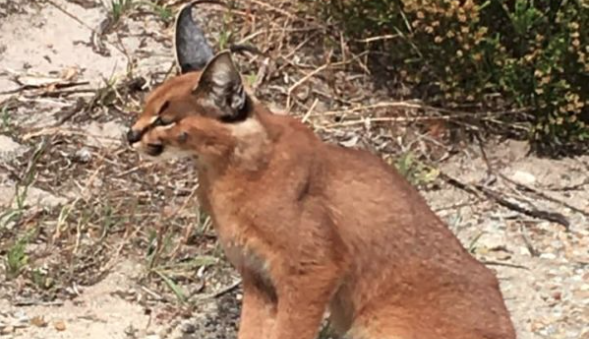Capetonians are always excited to see a caracal – these beautiful red cats are famous for being elusive, to see one is a privilege.
One such cat, sometimes called a red lynx, was seen on Boyes Drive on Saturday, November 16.



Caracal sightings are becoming more common across the Cape, and this can be attributed to how humans are invading more of this animal’s natural habitat, forcing it into urban areas.
The Urban Caracal Project, an organisation that monitors and rehabilitates caracals in the Cape, urges anyone who has spotted a caracal to report it to them immediately.
“One of the most important ways community members can help the Urban Caracal Project is to report sightings, especially if pictures can be provided, and to report roadkill,” the Project said. ” We aim to understand the threats to their survival in this urban environment. By studying animals that die in the area, we are able to learn about their ability to survive and persist in urban areas, and threats (such as pesticide exposure) to their ability to survive longterm. Samples acquired from roadkill also play a key role in our understanding of the genetic health of caracals in the Cape Peninsula. The more eyes we have on the ground, the much more we will learn.”
According to the Project, caracal roadkill and other sightings can be reported to Dr Laurel Serieys on 079-837-8814. SMS easiest since she is often in areas with poor reception.
An email can also be sent to [email protected]
Picture: Dayle Reid/Our Fish Hoek Group/Facebook

